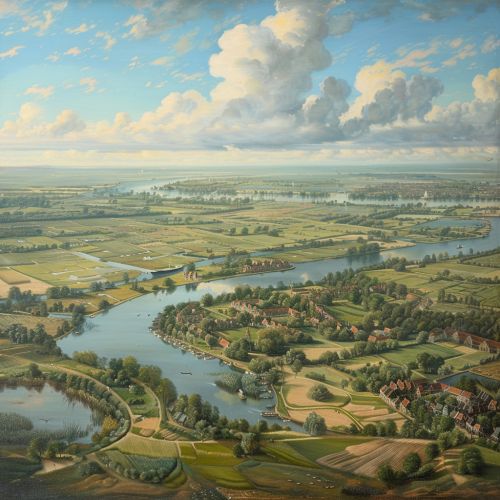Dutch Republic
Origins and Establishment of the Dutch Republic
The Dutch Republic, officially known as the Republic of the Seven United Netherlands, was a republic in Europe existing from 1581 to 1795, located in the low-lying northwestern region of the continent. The Republic was established through a rebellion against the Habsburg rule, marking the end of the Eighty Years' War and the start of the Dutch Golden Age.


Political Structure
The Dutch Republic was a confederation of seven provinces, which had their own governments and were incredibly autonomous. The provinces were united by a common goal: resistance against the Spanish Habsburgs. The political structure was unique for its time, characterized by its level of decentralization and the significant influence of the merchant class, known as the Regents.
Economy
The Dutch Republic was one of the world's leading economic powers in the 17th century, often referred to as the Dutch Golden Age. This period was characterized by economic, scientific, and cultural growth. The Republic was a major player in international trade, with its merchant fleet being the largest in the world. The economy was based on a free market philosophy and was supported by a vast overseas network of trading posts and colonies, managed by the Dutch East India Company and the Dutch West India Company.
Religion
Religion played a significant role in the Dutch Republic. The dominant faith was Calvinism, but the Republic was known for its relative religious tolerance. Catholics, Lutherans, Jews, and people of other faiths were allowed to practice their religion, but they were often subject to certain restrictions and were not allowed to hold public office.
Military
The military of the Dutch Republic was primarily focused on naval power. The Dutch navy was one of the most powerful in the world during the 17th century, reflecting the Republic's economic strength and its reliance on sea trade. The Republic also maintained a professional standing army, which was unusual for the time.
Culture
The Dutch Golden Age was a time of great cultural achievement. Dutch art, particularly painting, flourished, with artists such as Rembrandt and Vermeer creating some of their most famous works. Dutch scientists, such as Christiaan Huygens and Antonie van Leeuwenhoek, made significant contributions to the scientific revolution.
Decline and Fall
The Dutch Republic's decline began in the late 17th century, as it faced economic competition from England and France and suffered from a series of wars. The Republic was eventually overthrown in the late 18th century by revolutionary forces inspired by the French Revolution, leading to the establishment of the Batavian Republic.
Legacy
The Dutch Republic left a lasting legacy in many areas. Its economic system laid the groundwork for modern capitalism, and its political structure influenced the development of democracy. The cultural achievements of the Dutch Golden Age continue to be celebrated today.
